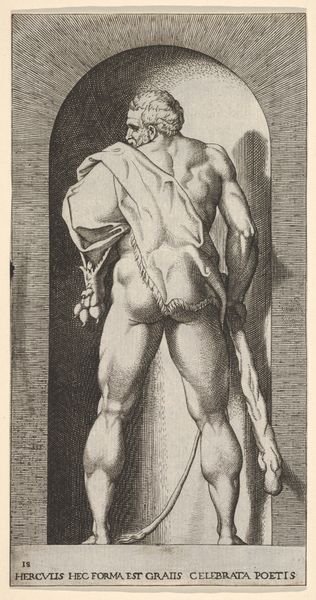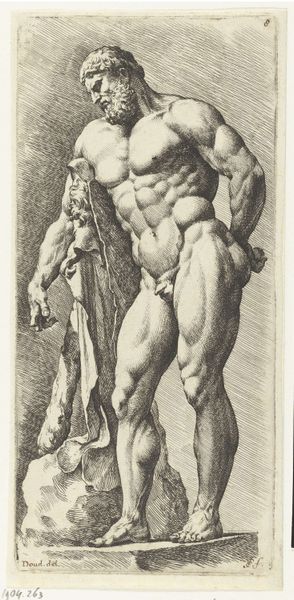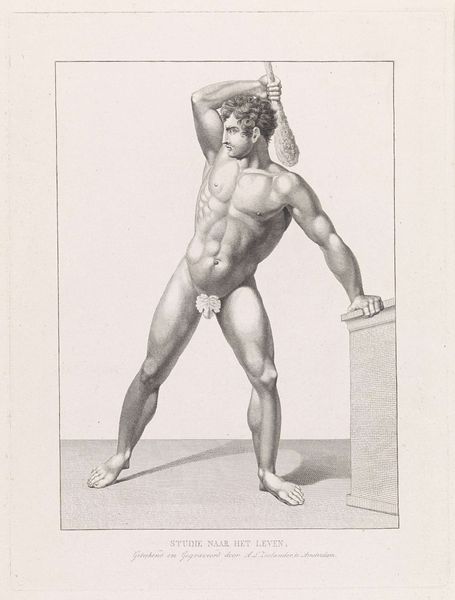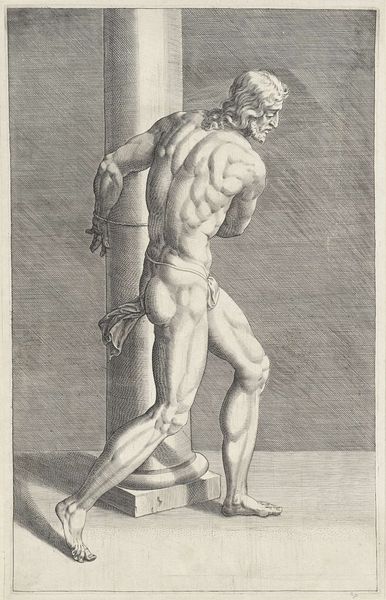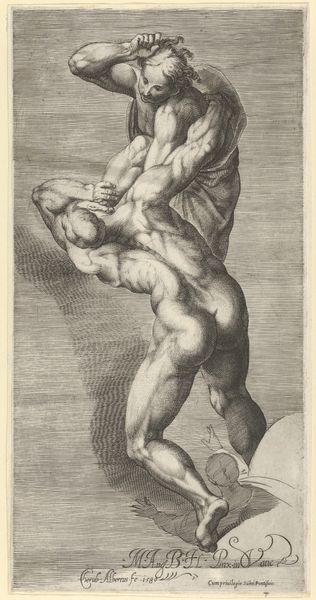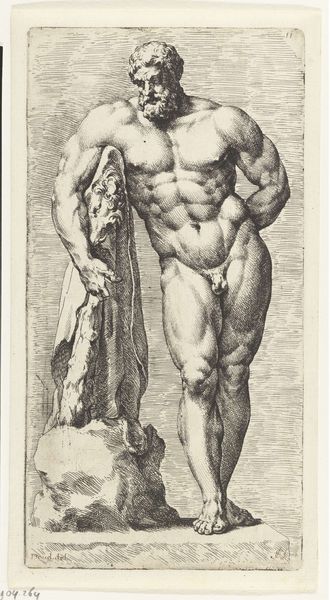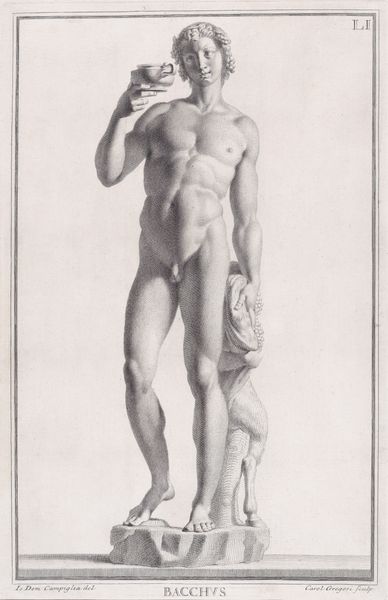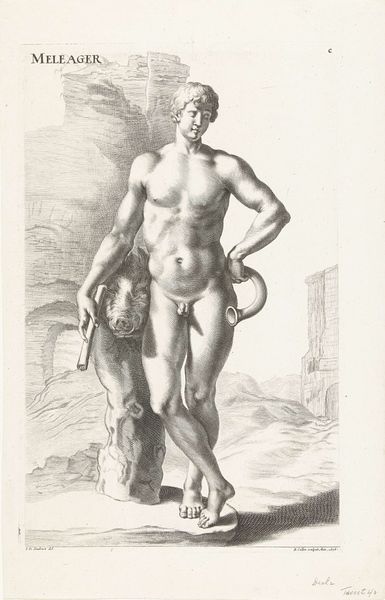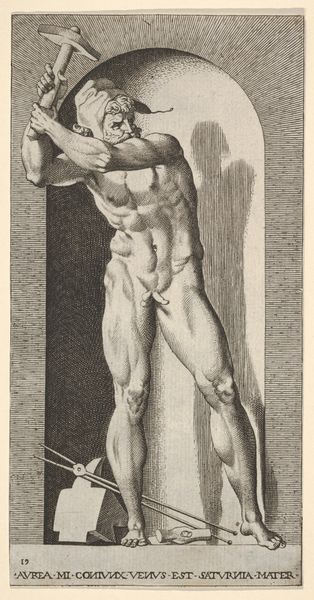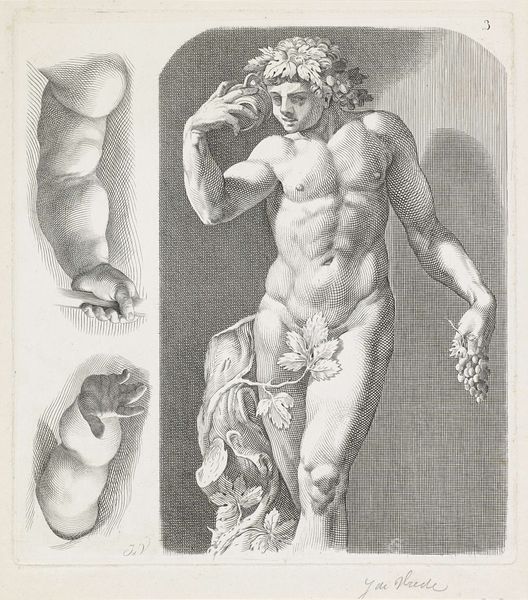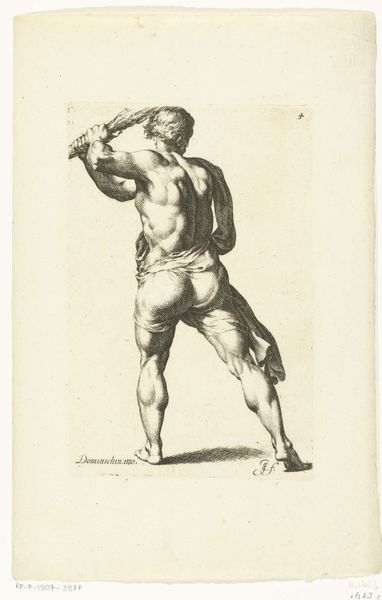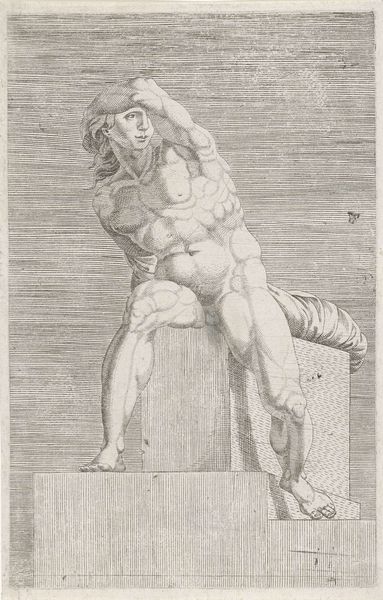
print, engraving
#
baroque
# print
#
figuration
#
history-painting
#
nude
#
engraving
Dimensions: height 333 mm, width 208 mm
Copyright: Rijks Museum: Open Domain
Curator: Before us is "Faun met kind," or "Faun with Child," an engraving created by Richard Collin in 1677, now held at the Rijksmuseum. The print depicts a faun holding a baby in his arms. Editor: My immediate response is to the rendering of weight, both literally and emotionally. The bulky form of the faun feels substantial, protective almost, contrasting with the apparent weightlessness of the child he cradles. Curator: Absolutely. Faun figures prominently in cultural memory, often tied to ideas of the wild, the rustic, and unrestrained nature. In art, they can represent a kind of primal, even chaotic, force. Here though, he’s holding a child with marked tenderness, hinting at nurture amid the wilderness. Editor: The artist’s meticulous use of line enhances the sense of form. See how the dense hatching creates the modeling of the faun's musculature and the soft curves of the baby’s flesh, but is offset against a simpler etched ground to build three-dimensionality, guiding the eye smoothly over each body. It suggests the engraver took great pains to mimic tonal range through a complex arrangement of engraved marks. Curator: Consider also how this image aligns with wider themes within Baroque art. There's a dramatic quality here, despite the simplicity of the scene—a narrative implication suggesting a history of protection, a possible allegory on raising children and protecting innocence. In the bestiaries, folklore traditions, or allegorical dramas, the meaning and role of fauns changed drastically, reflecting shifts in moral and religious perspectives. Editor: It’s fascinating how Collin has captured that tension – that potential for savagery so tempered here by the intimate act of caring for a child. It highlights a duality, almost a contrast, which generates much of the dynamism inherent in the work's semiotic content. Curator: Precisely, it prompts us to contemplate the complexities within us all, the delicate balance between our more primal drives and our capacity for gentleness. That, I find, gives the print its continued resonance. Editor: And visually, how those finely engraved lines make such depth palpable across something existing simply on paper still astonishes centuries on.
Comments
No comments
Be the first to comment and join the conversation on the ultimate creative platform.

